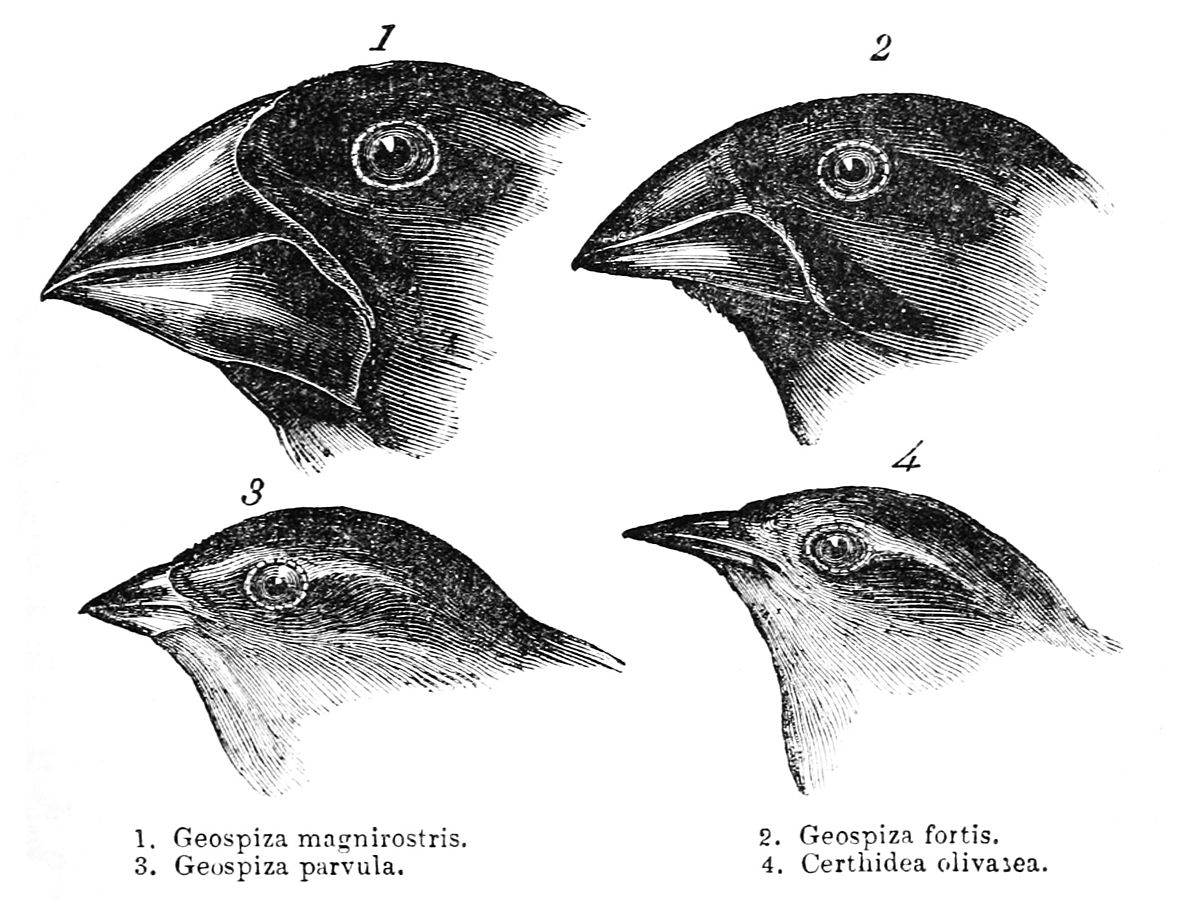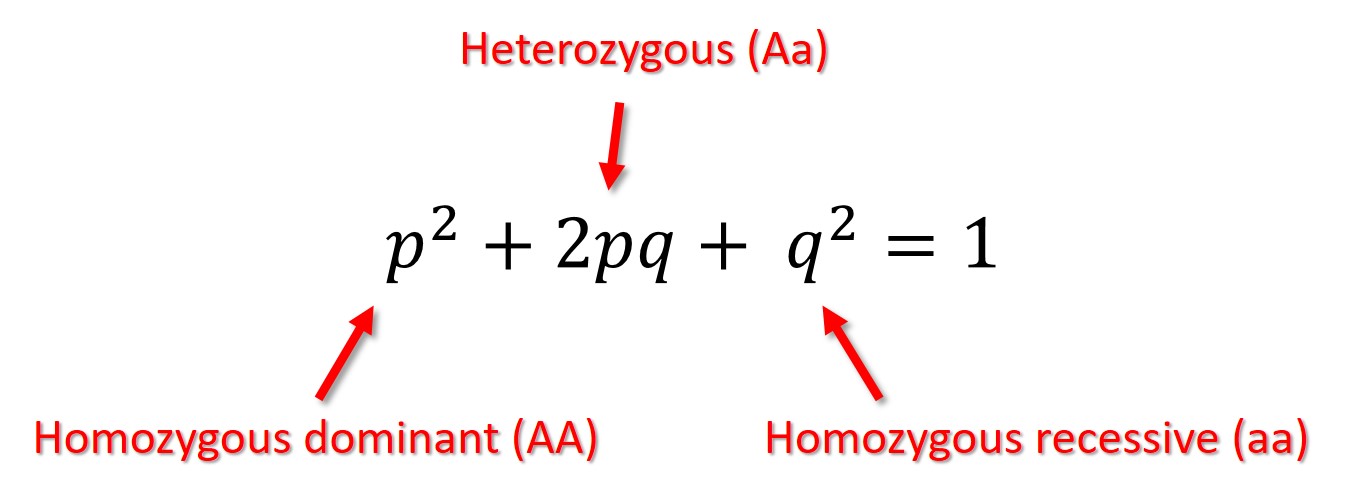What is evolution?
Evolution is the process by which there is a change in the frequency of traits in a population from generation to generation.
Scientists behind evolution
Jean-Baptiste Lamarck proposed early details on evolution:
- Use and disuse — The body parts that organisms heavily use develop and become stronger, while the body parts that are not used very much become weaker. This is not correct for evolution.
- Inheritance of acquired characteristics — Features that an organism acquired during its lifetime, such as muscle mass and intelligence, are passed onto offspring. This is incorrect because only genetic characteristics are passed down, not ones acquired during an organism’s lifetime.
Charles Darwin further studied evolution and published his findings in his book, The Origin of Species. Darwin came up with the theory of natural selection (survival of the fittest) after observing finches beak length.

Natural selection dictates that individuals with phenotypes (physical characteristics) that are better suited to their environment will have a higher chance of surviving and reproducing (and therefore passing down their favorable traits to their offspring). Superior inherited traits are called “adaptations” and an organism’s ability to survive and have offspring is called its “reproductive fitness”.
Darwin also made the following arguments:
- Populations can produce many, many offspring — Individuals in a population can produce more offspring than the environment can support.
- Population sizes are generally stable and do not vary much over time
- There are limited resources — There is not enough food and water to support all individuals, so only those with the most favorable traits will survive.
- Individuals must compete for survival
- Individuals in a population have varying traits — For example, humans have different eye colors.
- Variation is heritable — Only genetic traits are passed down from parents to offspring. Acquired characteristics like an amputation or pathogenic sickness are not passed down to the offspring.
- Individuals that are the most fit and have the most favorable characteristics will survive in their environment
- Favorable traits can accumulate in the population — As time passes, a higher proportion of individuals in the population will acquire the favorable trait and will be more likely to pass on their favorable traits to their offspring.
Types of Selection

Stabilizing selection: Natural selection favors individuals with the most common form of a trait. Individuals who have extreme traits are not selected for.
Directional selection: Traits that are at one extreme are favored. Eventually, the extreme traits become common, causing the frequencies to change at a faster rate over time.
Disruptive selection: The environment favors both extremes. This causes the population to move further away from the most common traits.
Artificial selection: Selection caused by humans. For example, pugs were created by artificial breeding.
Hardy-Weinberg Equilibrium
Hardy-Weinberg Equilibrium occurs when the allele frequencies remain constant in a population and there is genetic equilibrium.
The following conditions must be met for Hardy-Weinberg Equilibrium:
- No natural selection
- No mutations
- The population is isolated and no other population can affect the population that is being studied
- Population is large
- Random mating
The Hardy-Weinberg equation is as follows:

p is the frequency of the dominant allele and q is the frequency of the recessive allele. p2 is the frequency of homozygous dominant individuals in the population (those with both dominant alleles), 2pq is the frequency of heterozygous individuals in the population (those with one dominant and one recessive allele), and q2 is the frequency of homozygous recessive individuals in the population (those with both recessive alleles).
Speciation Types
Allopatric speciation is when a population becomes divided by a geographic barrier, such as a mountain or river. The two species are reproductively isolated, so each population will evolve separately and eventually new species will arise.
Sympatric speciation is when new species arise in a population that is not geographically divided.
Adaptive radiation is when many species rapidly evolve from a single ancestor. This occurs when there are different sets of conditions that different parts of the ancestral species live in and eventually give way to new species.
Types of Reproductive Isolation
Reproductive isolation can occur due to either prezygotic or postzygotic isolating mechanisms. Prezygotic isolating mechanisms are mechanisms that prevent fertilization of an egg cell, while postzygotic isolating mechanisms are mechanisms that prevent offspring from being fertile (the offspring will be sterile).
Prezygotic isolating mechanisms:
Habitat isolation — Species cannot meet because of a geographic barrier
Temporal isolation — Species grow in different seasons or perform activities at different times in the day. For example, some flowers grow earlier than others.
Behavioral isolation — Due to differences in courtship rituals, smells, mating songs, etc., individuals cannot recognize each other as part of the same species. The individuals do not mate.
Mechanical isolation — The male and female genitalia do not match.
Gametic isolation — The male gametes cannot reach the female gamete (perhaps due to the environment of the female gamete) or the female gamete is unable to recognize the male gamete.
Postzygotic control mechanisms:
Hybrid invariability — The zygote cannot survive or the organism dies before reaching reproductive age.
Hybrid sterility – The offspring is sterile and cannot reproduce. Mules, which are offspring of donkeys and horses, are sterile.
Hybrid breakdown — The offspring have a lower chance of survival or a lower chance of reproducing.
Sources:
Okasha, Samir. “Population Genetics.” In The Stanford Encyclopedia of Philosophy, edited by Edward N. Zalta, Winter 2016. Metaphysics Research Lab, Stanford University, 2016. https://plato.stanford.edu/archives/win2016/entries/population-genetics/.
“Stabilizing, Directional, and Diversifying Selection,” August 14, 2020. https://bio.libretexts.org/@go/page/13488.
